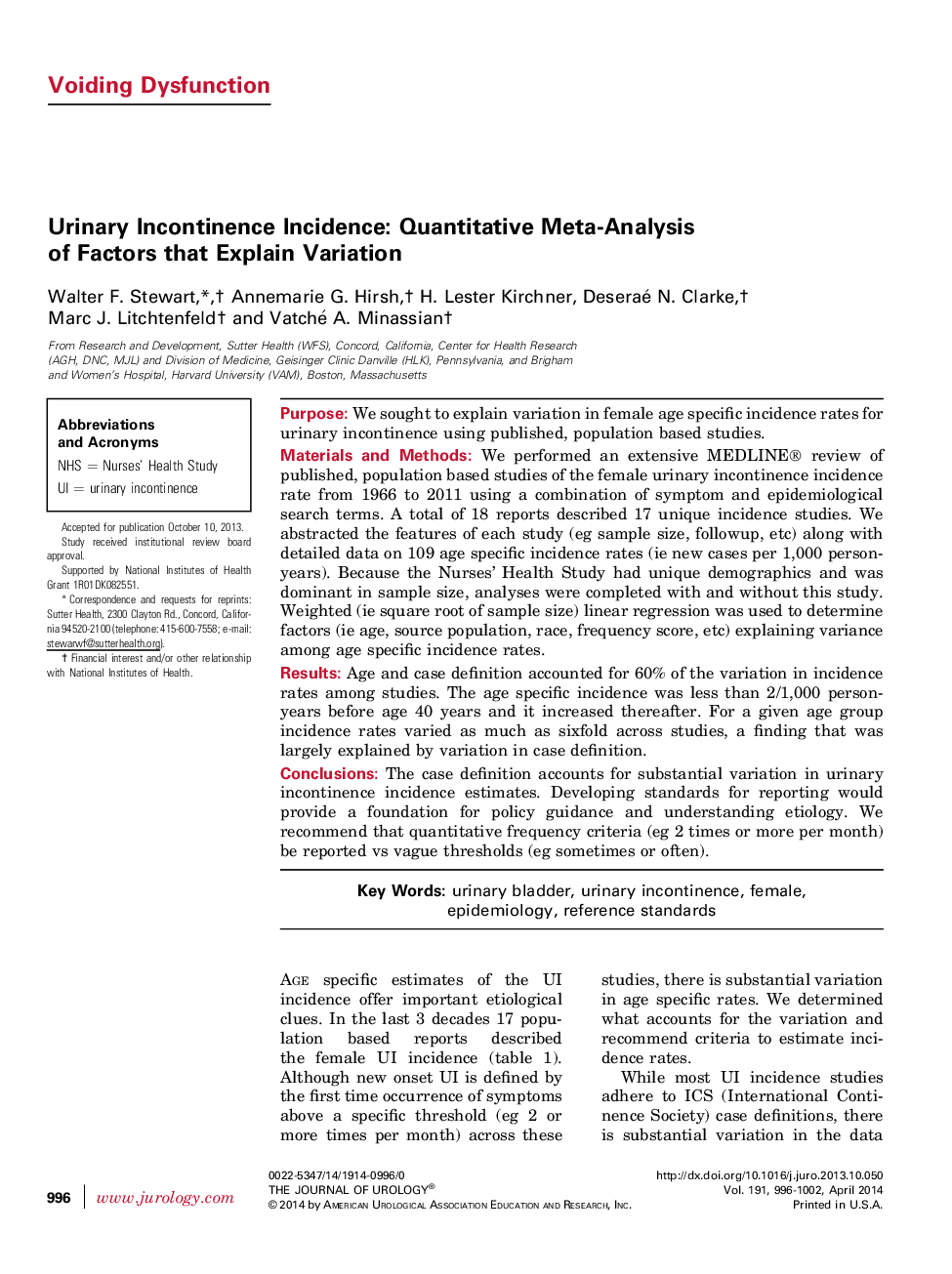| Article ID | Journal | Published Year | Pages | File Type |
|---|---|---|---|---|
| 3865606 | The Journal of Urology | 2014 | 7 Pages |
PurposeWe sought to explain variation in female age specific incidence rates for urinary incontinence using published, population based studies.Materials and MethodsWe performed an extensive MEDLINE® review of published, population based studies of the female urinary incontinence incidence rate from 1966 to 2011 using a combination of symptom and epidemiological search terms. A total of 18 reports described 17 unique incidence studies. We abstracted the features of each study (eg sample size, followup, etc) along with detailed data on 109 age specific incidence rates (ie new cases per 1,000 person-years). Because the Nurses' Health Study had unique demographics and was dominant in sample size, analyses were completed with and without this study. Weighted (ie square root of sample size) linear regression was used to determine factors (ie age, source population, race, frequency score, etc) explaining variance among age specific incidence rates.ResultsAge and case definition accounted for 60% of the variation in incidence rates among studies. The age specific incidence was less than 2/1,000 person-years before age 40 years and it increased thereafter. For a given age group incidence rates varied as much as sixfold across studies, a finding that was largely explained by variation in case definition.ConclusionsThe case definition accounts for substantial variation in urinary incontinence incidence estimates. Developing standards for reporting would provide a foundation for policy guidance and understanding etiology. We recommend that quantitative frequency criteria (eg 2 times or more per month) be reported vs vague thresholds (eg sometimes or often).
